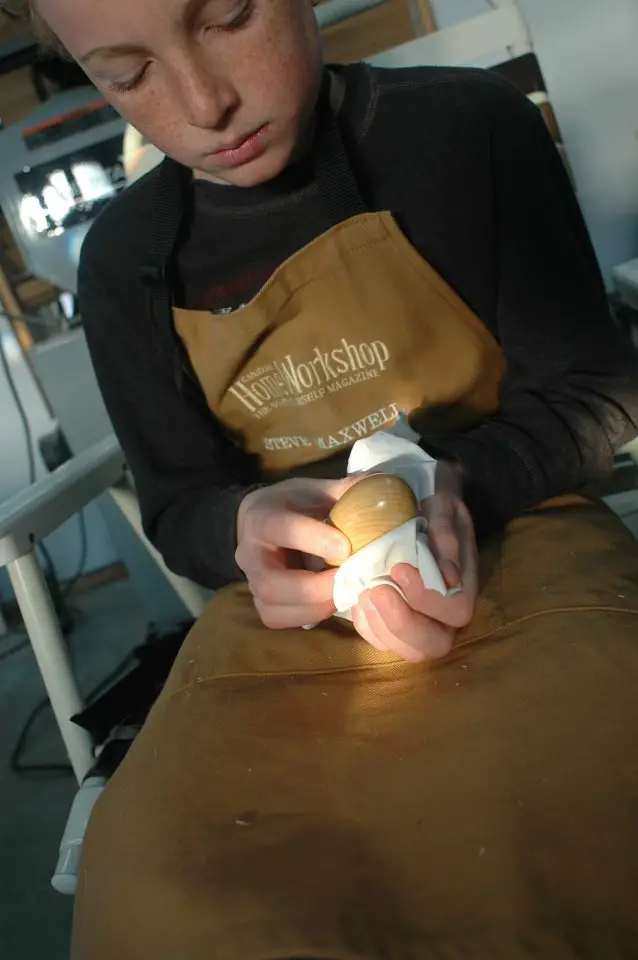Home schooling is increasing in popularity across North America and other places for a handful of reasons. Over the years we’ve done some home schooling here at the end of Bailey Line Road, and this article is to explain something to you that I wished someone had explained to me much earlier on.
The Back Story
It was 1995 when it came time for our oldest child, Robert, to go to school for the first time, and at the time I really wanted to teach him at home. There he is below, in the middle years of his elementary school career.

My thinking was simple: Both my wife, Mary, and I are home all day every day, and working together I was sure we could teach Robert in ways that the school system couldn’t match. Trouble was, Mary didn’t feel up to the job of home schooling and I didn’t think I could fit the job of a home schooling dad into my full-time work day. So Robert ended up going to public school for his whole career, and so did his younger sister, Katherine. That’s her below on the swimming raft on the lake near our place.

As the years have gone by, it’s plain to see a steady decline in the level of academics, morality and behaviour in the classroom. Every long-term teacher I speak with tells me the same thing. Almost all the kids today are nothing like the kids they taught 20 years ago. Many are coming to the classroom for the first time not knowing manners, not having respect for authority, and, in most cases, hopelessly addicted to their phones as they sneak peaks at the screen during the work day at their desks. But despite my growing concerns as a dad, I couldn’t figure out how to fit home schooling into my work day, at least not the way I envisioned home schooling at the time. If only I knew then what I know now.
Different Home Schooling
Quite by accident one day I realized something. So many home schoolers manage their day the same way professional teachers do in public schools, just on a smaller scale. That’s what I was envisioning for myself, too. I never thought otherwise. The parent acts as the teacher, spoon feeding the children information, leading them through the learning process hand-in-hand – teaching them. My problem was that I didn’t have time to spoon feed and I’d never seen any alternative. Then it hit me: In a world where information is anything but scarce, is spoon feeding information really the only way for a child to learn? Is it even the best way to learn? Perhaps one of the best “lessons” I could give my kids was the experience of how they could teach themselves.

I decided to put this idea into practice in 2009, when my son Joseph was going into grade 7, and my son Jacob was heading into grade 5. That’s Joe below above polishing a wooden egg he carved in our workshop. Neither Joe nor Jake liked the idea of home schooling when I suggested it, but I explained that we’d try it for two years and see what happened. My plan was simple and it worked beautifully.

How It Works
I set out daily academic expectations for Joe and Jake, pointed them towards the resources they needed to learn on their own, then I’d monitor the results at the end of the day. I would do no teaching unless absolutely necessary, passing the responsibility for learning on to them. My job was to tell the boys what they needed to learn, then make sure they learned it without spoon feeding them. As it turned out, my role as a home schooling dad took me no more than one hour a day, but the academic results we achieved were even better than I’d hoped for. To be fair, this approach only works if a child can read, write and understands numbers. So if you’re homeschooling a child who doesn’t know these basics skills yet, you will need to spoon feed to get them off the ground. But after that, children are quite capable of learning in a self-directed way.
The first thing I noticed about Joe and Jake when they started home schooling was that neither could write properly. They were both at the top of their school classes in all subjects, yet neither of them knew how to use capitals, commas, periods and paragraphs. Each of their “sentences” had at least two spelling errors. Hand writing was almost illegible all the time. Math was weak, too. Neither boy knew their multiplication tables by heart (a milestone that everyone in my school had mastered by the end of grade 3), and neither understood how to self-manage their time at all. In short, these top-of-the-class boys were academically incompetent in the fundamentals and unable to guide themselves.
Incentivize Efficiency
One of the home schooling approaches I put into practice back then had to do with time and productivity. I didn’t care how fast or slow the boys worked, as long as they got their day’s work done before sun down. At first, if the boys wasted time (and they sure did at first), it might take them from 8am to 6pm to finish their day’s work. But once they realized that working efficiently got them out of the office and down to the lake fishing for the afternoon, they could be done their day’s work by 11am. It’s amazing what happens when a child feels the rewards of being productive. It took more than 6 months of home schooling for this self-motivated direction to kick in.
By the end of our two years of home schooling, both Joe and Jake could write better than most adults I know, they could teach themselves just about anything, and they were covering chemistry and history and geography at a high school level. Joseph (now 26 years old in 2024) went on to teach himself all through high school at home (not a single bit of help from me nor a teacher) and he earned an SAT score high enough to win an academic scholarship as a foreign student at the University of Tennessee. Joseph also used his free afternoons to teach himself shot put and discus throwing on some concrete pads we poured together in our pasture. He went on to set Canadian records in both these events, as well as school records down in Tennessee. That Joe below throwing for the university.

Jacob (now 24 years old in 2024) is on his way to becoming a veterinarian and pulling off the 90% marks necessary at university. He opted to go to high school so he could spend time with friends but when he runs into problems, he knows how to solve them without help. He can also change the brakes on the car he drives, he cooks well, he can do laundry and he’s holding down a part-time job milking cows at a large dairy barn.

Most Can Do This
None of this is to brag, and please don’t think that my kids are natural geniuses. They’ve just been presented with different expectations and opportunities than most. I firmly believe many, many young people could achieve similar results if they were presented with expectations for learning and ways of learning that are different than what’s common today. Will home schooling work for every family? No, it won’t, but then again nothing works for everyone. But I’m sure most young people would develop far more fully if they were taught to teach themselves as well as learning specific subjects focus on the basics and with an emphasis on what interests them.
A few years back our last home schooler, Ellie (now 16 years old in 2024) went back to public school. She’s super outgoing, vivacious, laughs a lot and makes friends easily. Ellie’s singing skills blossomed during our homeschooling years (I think you’ll be impressed by her YouTube channel singing so check it out), but by grade 8 she was missing kids her age. I offered her the chance to go back to public school to start grade 9 and she did. If nothing else, this transition reinforced my appreciation of the value of home schooling.
Once at high school Ellie’s singing progress slowed down to nothing, she was much more tired, jaded and unhappy, she’d would wake up every morning begging to stay home, yet also feeling compelled to do go. “You can stay home any time you want”, I’d tell her, but the lure of socializing was too strong, at least for a while. She was also not really learning much since she was getting great marks in grade 9 since she’d mastered all the skills a year or two earlier. You can see Ellie below from a few years ago. Then things changed.

On her own, earlier this year, Ellie decided to come back to home schooling for high school, beginning in February 2024. She’s loving it and has no regrets. She often tells me how much happier she is, how much better rested she is, and how much she appreciates having time to cook, go for walks in the forest, and work out with weights. She also has time for her singing and she’s writing a fantasy novel now when she’s not following an online school curriculum (with only the most minimal help from me). She’s learnings academics at a level that schools should be teaching but don’t seem to be able to any more, but she’s also learning self reliance when it comes to education.
But what about socialization, you might wonder? Isn’t Ellie at a disadvantage?
Socialization Realities
“There are two kinds of friends in the world, Dad”, Ellie explained to me recently. “There are school friends, and real friends. School friends are people you’d never hang out with but do every day at school because you happen to be in the same class and eat lunch at the same time. Then there are real friends. I now see how I can have real friends without school.”
One thing parents might not realize is how much of a mental burden it can be to go to public school, especially when your kids are surrounded by peers who believe they have mental illness. It’s quite common now in our “psychologized world”.
“I think I have ADHD. I’m clinically depressed. I think of killing myself nearly every day. I’m terrified all the time of a school shooter.” These are the kinds of stories Ellie would hear every day from her friends at school, and the dark cloud it puts over young people who wouldn’t normally think of these things is powerful and real. Ellie has her own straight-forward take on this: “The teachers are always talking to us about the importance of mental health, but this makes me mad because it’s school that’s causing mental illness.”








